Do you have a question about the Nokia 3109 classic and is the answer not in the manual?
Essential safety guidelines for device usage, including warnings about interference and specific environments.
Information on enhancements, water-resistance, backup, connecting devices, and emergency calls.
Explains how memory is shared among features and potential memory full issues.
Details on security code, PIN, PUK, and restriction passwords for device and SIM protection.
How to obtain and manage network settings for services like MMS and internet.
Information on obtaining and installing device software updates for new features and performance.
Step-by-step guide for inserting the SIM card and battery into the device.
Guide on connecting the charger, charging indicators, and charging time.
Identification and function of physical keys and device components.
Instructions for activating and using flight mode for radio-sensitive environments.
Steps for dialing numbers, using international format, and setting up speed dial shortcuts.
Procedures for managing incoming calls and options available during an active call.
Information on sending, receiving, and limits of SMS messages.
How to create and send multimedia messages with text, images, and sound.
Setting up and using the device's e-mail client for sending and receiving emails.
Configuring general settings, text message options, and SIM messages.
Instructions for saving names, phone numbers, and details for contacts.
Configuring contact display, memory usage, and managing contact lists.
How to view missed, received, and dialed calls, plus message logs.
Customizing phone profiles and device appearance with themes.
Adjusting ringtones, wallpaper, font colors, screen savers, and power saving.
Setting device time/date, customizing navigation key shortcuts.
Overview of Bluetooth capabilities, compatibility, and usage for wireless connections.
Steps for setting up Bluetooth connections and configuring packet data services.
How to synchronize data with a PC or remote server using various connection methods.
Using USB cable for data transfer and configuring call features like divert and auto-answer.
Customizing language, security, welcome notes, and flight query.
Details on PIN/UPIN requests, call barring, and other security options.
Configuring update preferences and resetting device settings to factory defaults.
Accessing and managing media files like images, music, and themes.
Using the media player for various file types and configuring streaming services.
Playing music tracks, using virtual keys, and managing the music library.
Understanding PTT channel types and creating new channels for group conversations.
Switching PTT on/off and making/receiving PTT calls with contacts.
Accessing and playing games installed on the device or memory card.
Installing and managing Java applications and other software.
Setting, managing, and stopping alarms, including snooze functionality.
Creating calendar notes, managing tasks, and setting alarms for events.
Configuring internet settings and establishing connections to web services.
Managing cookies, scripts, download settings, and receiving service messages.
Understanding browser security, modules, and certificates for secure connections.
Creating digital signatures for secure transactions using the SIM card.
Connecting to a PC for synchronization and using data services like HSCSD.
Information on device power, battery life, and charging guidelines.
Guidelines for battery usage, charging, disposal, and authenticating original batteries.
Recommendations for protecting the device from moisture, dust, temperature, and physical damage.
Precautions regarding small parts, RF exposure guidelines, and operating conditions.
Warnings about potential interference with medical devices and specific advice for users with implants.
Potential interference with hearing aids and safety guidelines for electronic systems in vehicles.
Safety procedures for explosive areas and making emergency calls.
Guidelines for radio wave exposure (SAR) and compliance with international standards.
Essential safety guidelines for device usage, including warnings about interference and specific environments.
Information on enhancements, water-resistance, backup, connecting devices, and emergency calls.
Explains how memory is shared among features and potential memory full issues.
Details on security code, PIN, PUK, and restriction passwords for device and SIM protection.
How to obtain and manage network settings for services like MMS and internet.
Information on obtaining and installing device software updates for new features and performance.
Step-by-step guide for inserting the SIM card and battery into the device.
Guide on connecting the charger, charging indicators, and charging time.
Identification and function of physical keys and device components.
Instructions for activating and using flight mode for radio-sensitive environments.
Steps for dialing numbers, using international format, and setting up speed dial shortcuts.
Procedures for managing incoming calls and options available during an active call.
Information on sending, receiving, and limits of SMS messages.
How to create and send multimedia messages with text, images, and sound.
Setting up and using the device's e-mail client for sending and receiving emails.
Configuring general settings, text message options, and SIM messages.
Instructions for saving names, phone numbers, and details for contacts.
Configuring contact display, memory usage, and managing contact lists.
How to view missed, received, and dialed calls, plus message logs.
Customizing phone profiles and device appearance with themes.
Adjusting ringtones, wallpaper, font colors, screen savers, and power saving.
Setting device time/date, customizing navigation key shortcuts.
Overview of Bluetooth capabilities, compatibility, and usage for wireless connections.
Steps for setting up Bluetooth connections and configuring packet data services.
How to synchronize data with a PC or remote server using various connection methods.
Using USB cable for data transfer and configuring call features like divert and auto-answer.
Customizing language, security, welcome notes, and flight query.
Details on PIN/UPIN requests, call barring, and other security options.
Configuring update preferences and resetting device settings to factory defaults.
Accessing and managing media files like images, music, and themes.
Using the media player for various file types and configuring streaming services.
Playing music tracks, using virtual keys, and managing the music library.
Understanding PTT channel types and creating new channels for group conversations.
Switching PTT on/off and making/receiving PTT calls with contacts.
Accessing and playing games installed on the device or memory card.
Installing and managing Java applications and other software.
Setting, managing, and stopping alarms, including snooze functionality.
Creating calendar notes, managing tasks, and setting alarms for events.
Configuring internet settings and establishing connections to web services.
Managing cookies, scripts, download settings, and receiving service messages.
Understanding browser security, modules, and certificates for secure connections.
Creating digital signatures for secure transactions using the SIM card.
Connecting to a PC for synchronization and using data services like HSCSD.
Information on device power, battery life, and charging guidelines.
Guidelines for battery usage, charging, disposal, and authenticating original batteries.
Recommendations for protecting the device from moisture, dust, temperature, and physical damage.
Precautions regarding small parts, RF exposure guidelines, and operating conditions.
Warnings about potential interference with medical devices and specific advice for users with implants.
Potential interference with hearing aids and safety guidelines for electronic systems in vehicles.
Safety procedures for explosive areas and making emergency calls.
Guidelines for radio wave exposure (SAR) and compliance with international standards.
| Display type | TFT |
|---|---|
| Display diagonal | 1.8 \ |
| Display resolution | 128 x 160 pixels |
| Display number of colors | 262144 colors |
| Internal memory | 8.5 MB |
| Flash card support | Yes |
| Maximum memory card size | 2 GB |
| Rear camera resolution (numeric) | - MP |
| Bluetooth version | 2.0+EDR |
| Interface | mini-USB, SyncML |
| Networking type | EGSM, GSM |
| Playback formats | MP3, MIDI, AAC, AAC+, eAAC+, WMA |
| Operating frequency | 900, 1800/1900 MHz |
| Video compression formats | H.263, H.264, MP4 |
| Ringer type | Polyphonic |
| Polyphonic rings quantity | 64 |
| Product color | Gray |
| Battery type | BL-5C |
| Talk time (2G) | 4 h |
| Battery capacity | 1020 mAh |
| Standby time (2G) | 400 h |
| Form factor | Bar |
| Phonebook capacity | 2000 entries |
| Text prediction system type | T9 |
| Personal info management (PIM) | Alarm clock, Calculator, Calendar, Countdown timer, Notes, To-do list |
| WAP | - |
| Data network | EDGE, GPRS, HSCSD |
| SIM card capability | Single SIM |
| Multimedia Messaging Service (MMS) | Multimedia Messaging Service (MMS) is a standard way to send messages that include multimedia content to and from a mobile phone over a cellular network |
| Depth | 15.6 mm |
|---|---|
| Width | 45.7 mm |
| Height | 108.5 mm |
| Weight | 89 g |
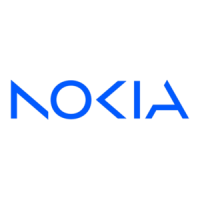

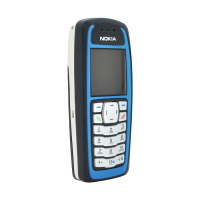


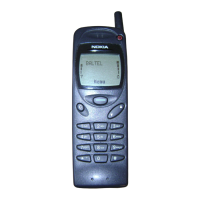



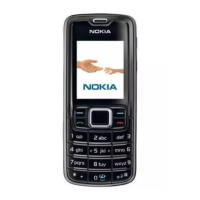

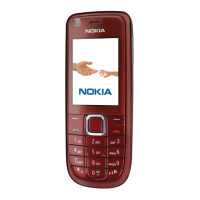
